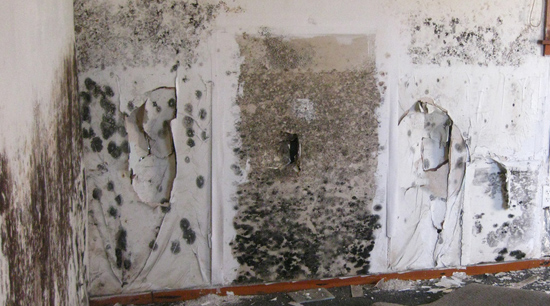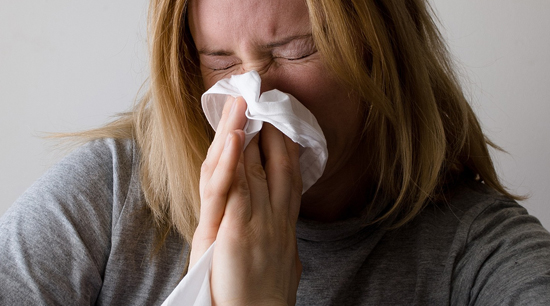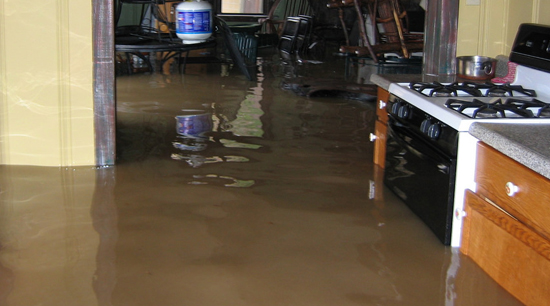After a house flood or water related disaster, mold exposure prevention should be at the top of your priorities. When mold grows and releases its spores, there can be health implications to all occupants exposed or living in its midst.

Our AWDR team provide some important insight and clarity about mold exposure, its symptoms, and preventative measures to assist you in making informed and healthy decisions.
What Are the Symptoms of Mold Exposure?
Depending on your sensitivity to mold, there may be no immediate symptoms when you are exposed to it. However, people with mold allergies can have reactions varying from mild to severe.
Mold Allergy Symptoms – If you have a mold allergy, the symptoms and signs that you have been exposed to mold are going to be strikingly similar to those of other upper respiratory allergies. According to the Mayo Clinic, allergic rhinitis induced by a mold allergy may include the following:
- Watery or Itchy Eyes
- Itchy, Runny, or Stuffy Nose
- Itchy Throat or a Cough
- Postnasal Drip
- Dry Scaly Skin
Mold Related Asthma Symptoms – Asthma symptoms may be triggered by mold exposure as well. In fact, if an individual has asthma and a mold allergy, a severe asthma attack can be be triggered after exposure to certain molds. The Mayo Clinic notes the following are signs and symptoms of asthma and can vary in intensity:
- Wheezing
- Tightening of the Chest
- Shortness of Breath
- Difficulty Breathing
- Coughing

While there are medications to help cope with mold allergies, your best course of action is to minimize and eliminate exposure to the types of mold causing the reaction.
Mold and Preexisting Lung Illnesses – People with a compromised immune system due to HIV infection, liver disease, chemotherapy, or that suffer from a lung illness are highly susceptible to developing severe lung infections after mold exposure.
What Does Mold Do to You?
In 2004, the Institute of Medicine (IOM) found sufficient evidence to link indoor exposure to mold with upper respiratory tract symptoms; these symptoms included wheezing and coughing in individuals that were otherwise healthy, in addition to seeing these reactions as well:
- Asthma symptoms in those with asthma.
- Hypersensitivity pneumonitis in those susceptible to the condition.
- Respiratory illness in otherwise healthy children.
Visit https://www.cdc.gov/mold/dampness_facts.htm for further reading on the findings of the IOM, indoor dampness, and mold.
Before Mold Exposure Symptoms Start – Take Action
Stopping Mold Growth – Mold spores are found indoors and outdoors and can remain dormant on practically any surface indefinitely. Mold requires water and food (plant and other organic matter) to grow, and the key to halting mold is to deprive it of moisture. This can be accomplished by incorporating the following:
- Fans to circulate air.
- The air conditioner (or central air) to dry and circulate the air.
- HEPA filters on the central air intake.
- Dehumidifiers.
- Open windows to circulate the air.
Water Emergencies – When there is a leak, flood, or water related emergency in your home, the potential for existing and new mold growth increases exponentially. This underscores the necessity to have flood waters professionally removed, and the property properly dried and tested.

Mold Remediation – When mold growth is detected, remediation should begin immediately. Mold grows very quickly under the right conditions, and can rapidly become irreversible without excessive expense and get out of control.
- Though it may be counterintuitive, the use of bleach-water and other household chemicals is strongly discouraged. While the surface mold may be eliminated, the water component of the solution will only serve to propagate the regrowth of the mold left behind.
- Calling in a professional mold remediation company will ensure the proper remediation treatment, thus halting mold growth, and preventing its spreading.
- After remediation services, ‘Post Clearance 3rd party testing’ it is necessary to ensure the remediation was properly executed, and has left the home safe for dwelling. This process should be performed by a qualified and certified Indoor Air Quality Professional, and should be contracted independently from the mold remediation contractor.
Mold Removal or Mold Remediation?
Mold removal is a popularized term used to generate an unreal expectation. Contrary to what the term implies, you cannot completely remove mold without removing the structure it is growing in.
Mold Remediation is the correct expression and treatment. When properly completed, this process will halt mold growth, eliminate harmful exposure, health concerns, and allow your safe return home.
While prevention is always good measure, unexpected events happen and require we act quickly and make informed decisions. For further reading on mold, mildew, and water emergencies, visit our blog.
(678) 505-0266